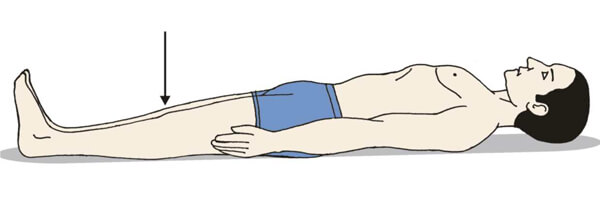After admission:
After you are admitted in the hospital, a resident / registrar doctor will come to you. He will examine you again & explain you in brief things to be carried out before & after the operation. A physician will come & examine you & will give the fitness for surgery.
Anaesthetist Visit:
Anaesthetist will come to you & will examine you from the view of anesthesia. He will explain to you in brief the type of anaesthesia, drugs to be stopped & the drugs to be taken on the day of surgery. You will be asked to stop taking food or drinks at least 6 – 8 hrs. before surgery.
Anaesthesia:
Anaesthesia will be spinal & epidural in which the lower part of your body will be anaesthetized. You will be awake during surgery. A thin plastic tube will be inserted into your back through which anaesthetic drug along with pain killers will be induced in your body. Because of this you will feel numbress in your legs. This tube may kept in your back for couple of days for pain relief.
Bathing:
You will be asked to have bath on the previous night of surgery & a couple of hours before surgery, to maintain cleanliness of your body & operation site.
After your operation:
After surgery you will be kept in the recovery room for couple of hours. After that you will be shifted to your room. You will be asked to keep fasting for 4-6 hrs. after surgery. After that you can start orally with clear liquids first. If there is no vomiting, you can have a light diet on the night of surgery.
Drips:
There may be an intravenous drip for next 2 – 3 days for admission of antibiotics, saline & fluids. Once you will start taking food orally, saline & fluids will be discontinued but antibiotics will be continued for the next couple of days.
Wound Drains:
There may be one or more small plastic tubes extending out of the side of the wound dressing, draining into a bottle. These tubes enable excess fiuid & blood to drain away from the wound. Dressing will be checked & changed as required. Pillow will be given under calf to avoid pressure sores.
Simple Exercises:
You are advised to do some simple exercise before & after operation. You should start them as soon as possible when you are still in recovery room or shifted to your room.
- Deep Breathing – Deep breathing and coughing will help to keep your lungs supplied with oxygen & clear the sputum.
- Leg Execises – Simple leg exercises will help to reduce risk of deep vein thrombosis & can easily be done. Some of them will also help mobilize your hip joint & strengthen your muscles.
- Foot Flexion & extension & circular movements. (fig. 1)
- Lying on your back, press your kness on to the bed with your leg straight. (fig.2)


Pain Relief :
If you have had an epidural anaesthesia, pain killer drug may be infused through it.
After first couple of post operative days, regular pain killers will probably provide sufficient pain relief, likely to be continued for several weeks to enable you to do necessary exercises.
In hospital, if your pain is not being controlled kindly inform a doctor or nurse, as it may be possible to give you stronger pain killers.
Thrombosis Prevention :
Blood clots are most common about 2 days after surgery. Although they can develop any time upto 3 weeks later.
- Prevention –
- Daily injection of low dose anti-coagulant or tablet until you are in hospital.
- You will be asked to wear anti-embolism stockings for upto 6 weeks after surgery.
Blood Test :
A sample of your blood will be taken to measure hemoglobin level. If hemoglobin is low –
- May be started on iron tablets.
- Sometimes blood trans fusions are required.
X-rays :
An x-ray will be taken of your operated joint, either in the recovery room or within 48 hrs. after operation.
Bladder Function :
You will have a urinary catheter that will drain your urine from your urinary bladder. It will kept there for the next 3-4 days until you are able to urinate voluntarily in a bed pan or commode-chair near bedside.

